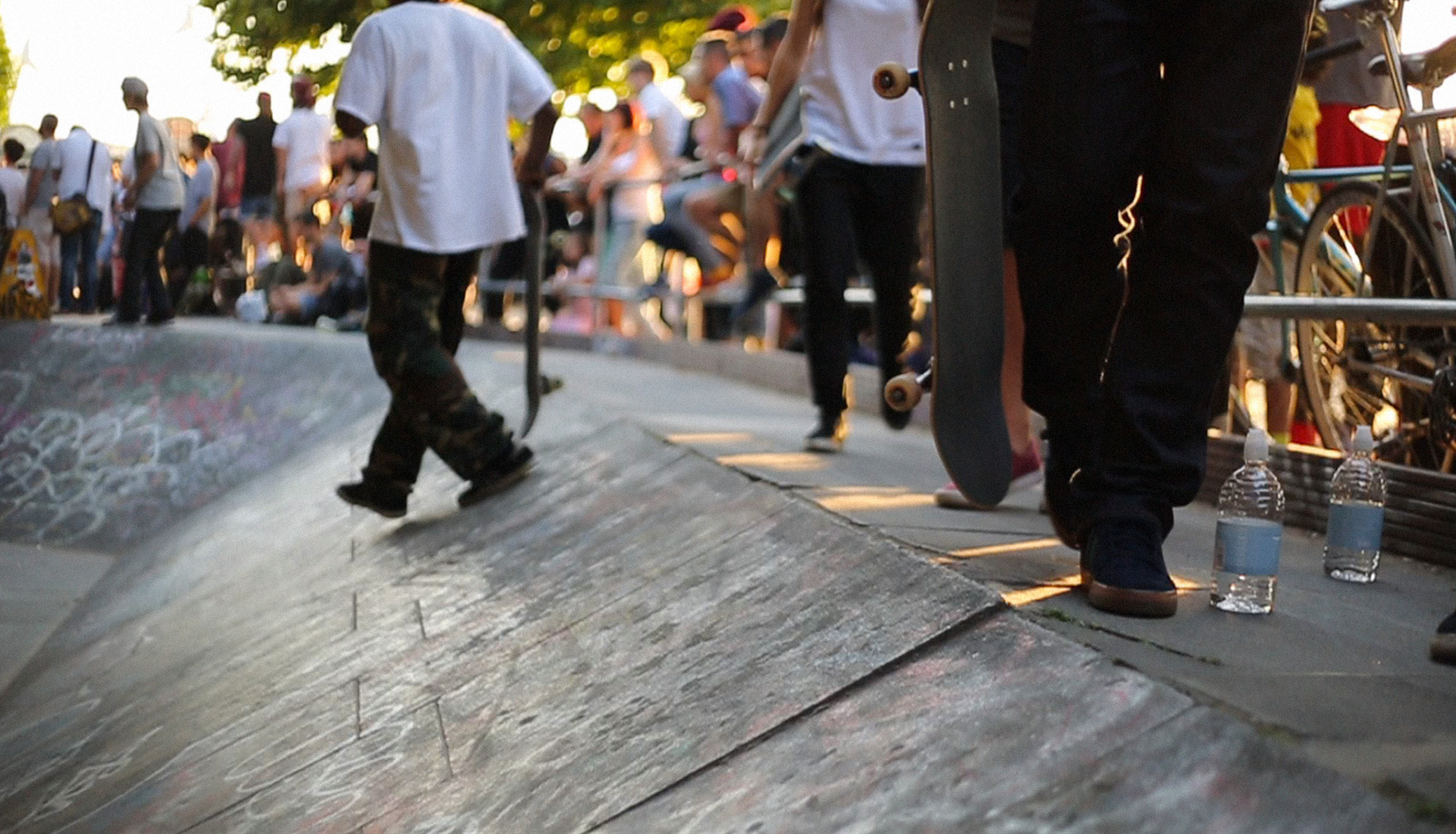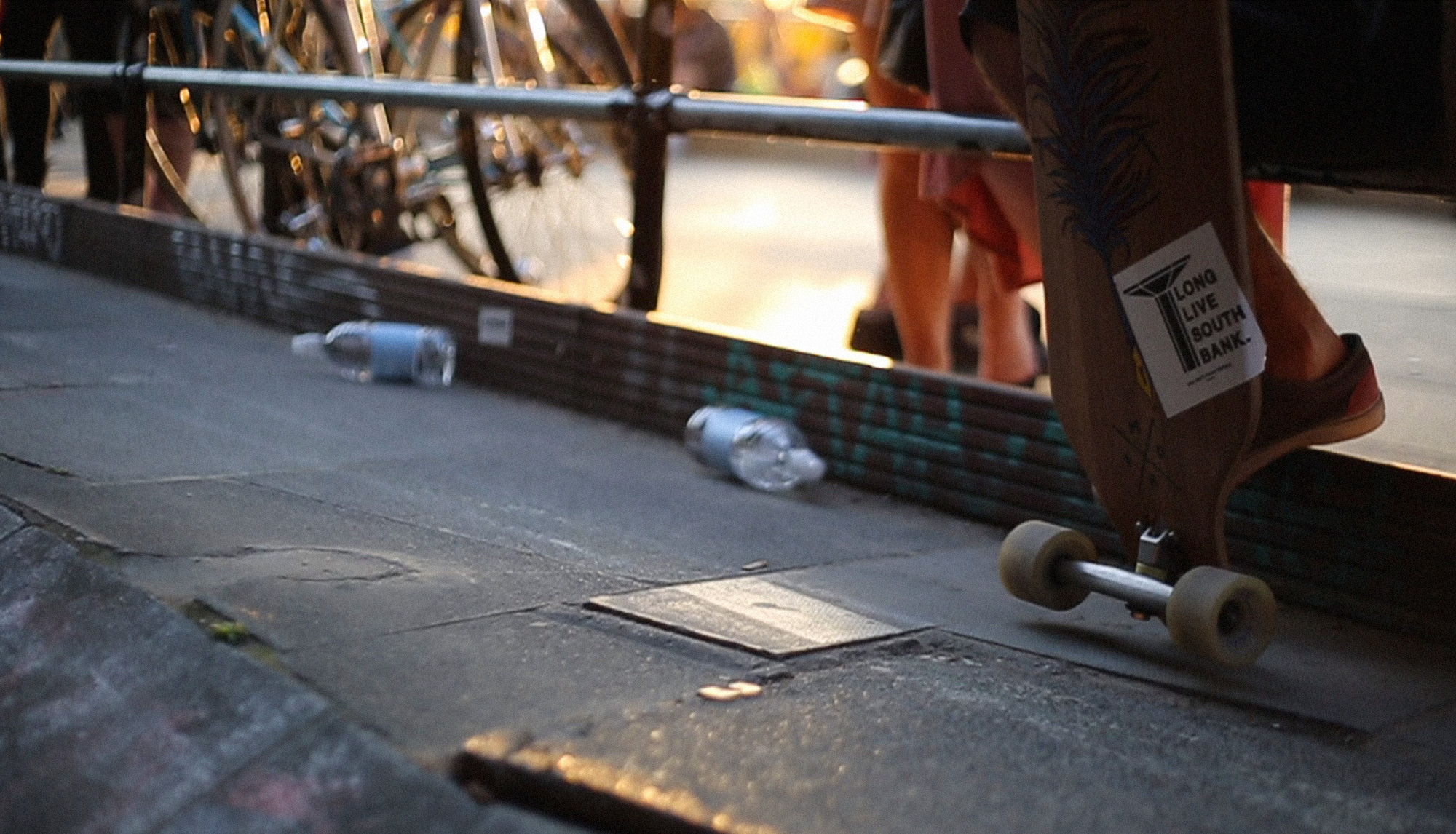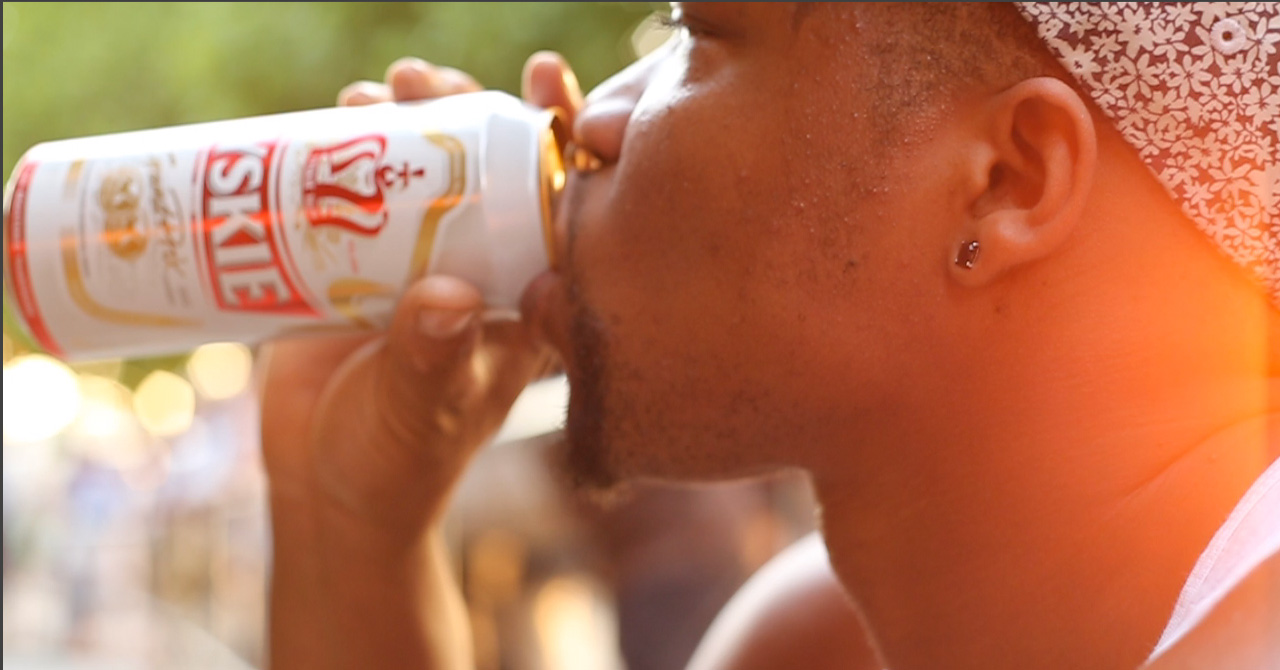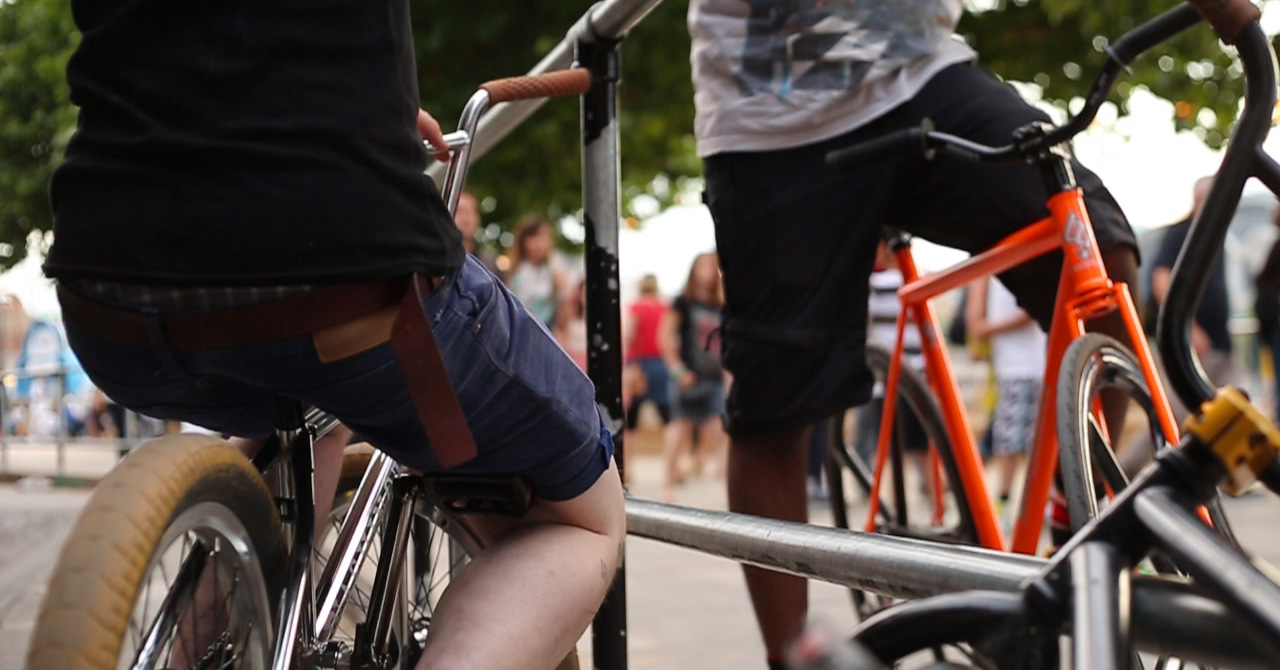They couldn’t believe at first how some scallywag skateboarders can just decide to stand up and say no!

The Southbank undercroft is quite a difficult topic to approach. On the one hand, what remains is a small undercover plaza & drainage ditch that regularly floods with rancid stinking drain water. Then on the other hand you’ve got the last standing remains of what was once an awesome outdoor street playground that stretched out from where the banks are now all the way along the embankment past Hungerford bridge and what used to be the old bird-shit-banks to the Shell Centre! The flatland BMXers that used to hang out at the back of the Queen Elizabeth Hall were great to watch until security got tight and boards went up.
The undercroft itself was more than twice the size it is now & it was without a doubt the central hub of the surrounding street scene. But knowing & experiencing how awesome the whole Southbank area once was makes it difficult to appreciate how little remains, as so much has already been lost to the commercial development of the whole area.
SB has both the fortune and misfortune of being right in the middle of one of London’s highest interest cultural destinations. The redevelopment of the area has been completely out of the control of the Skateboard and BMX communities, who’ve occupied the space since the days when it had little to no commercial worth. The result is that they’ve seen their ‘found’ habitat reduced to a very small percentage of what it once was.
What I find particularly interesting is that an old urban wasteland became a home to flourishing street sport & arts cultures. Until the Southbank Centre (ironically a Centre for arts and culture) decided that commercially developing the undercroft space to cater for bars & coffee shops was more culturally important.
So we caught up with LLSB to chat about the struggles of legitimising the undercrofts position and perception in modern London.

[SKT] When it comes to standing up against the forces of commercial development, there is no doubting now that SB definitely needed a formal defence. But at the time, how difficult was it for you guys to make the leap from being regular locals to being the front line defenders of a patch of land that you didn’t own?
[LLSB] Firstly, the ground and the space does not belong to anyone. That’s the reason people started skateboarding at Southbank – it was no mans land, an unused public space with no obvious use to the Southbank Centre or to anyone. In the early days of skateboarding (mid-late 70s) the Greater London Council officially allocated six areas in public parks and open spaces as ‘designated for casual skateboarding’ The Southbank undercroft was the most popular of these, and ever since then has been a shared public space open to absolutely everyone and central to the evolution of skateboarding, street sports and street cultures in London and the UK.
Talking about the locals becoming the defenders… the transition was not easy, and the transition is still happening today. From the days of the Southbank Table [literally a pop up table from which the petitions were signed] I remember going to SB every single day, we called it ‘the Office’, just talking to every single person, trying to make them aware of the situation, of what’s happening and where our world was kind of going. – There were so many challenges for everyone who was involved, it made a big impact on peoples lives. Nothing will be the same again, the energy and focus that was put in made us realise how much a bunch of people working together towards the same goal can do.
At the end of the day 150,000 people helped us save the undercroft. All of them are our family, they came from all over the world, just to save this place.
We weren’t really sure how seriously people were taking us, but we believed in what we were doing
The energy and focus that was put in made us realise how much a bunch of people working together towards the same goal can do
[SKT] Was your defence taken seriously in the beginning?
[LLSB] Well depends by who… If talking about the SBC (Southbank Centre) I think they couldn’t believe at first how some scallywag skateboarders can decide to stand up and say NO! They tried to make us believe that we weren’t going to win, using a lot of propaganda against us – literally copy and pasting what we did in order to defend SB and trying to turn our own arguments against us. Creating a petition basically against the skateboarders skating at Southbank… And even going so far as setting up a website called We Are Southbank Undercroft – except that nobody involved in that site was anything to do with the undercroft at all – it was run by Central St Martins who were commissioned by SBC management!
We weren’t really sure how seriously people were taking us, but we believed in what we were doing. Some people that supported the campaign weren’t confident, even when they signed the petition we would hear “You know you’re not going to win right?”. Every bit of negativity that was coming our way was diluting the positivity, so we had to stay really positive about the whole thing.
[SKT] Was it a difficult task to win round support & acceptance from formal bodies like councils, ministers & businesses?
[LLSB] The aim was to get the issue on as many tables as possible, especially once it was evident just how much public support there was for preservation. We didn’t really get any proactive responses from the local MPs and the local authority, their responses all seemed pretty tick-box, tokenistic and patronising, as if it wasn’t a big enough issue – despite tens of thousands of signatures. It was super hard to get meetings with the MPs, many like the culture secretary didn’t even respond. The response from the leader of Lambeth Council said she ‘had already met’ us, when we asked to meet her again. The Arts Council refused to meet us, the SBC board of governors refused to meet us. It felt as if everyone hoped we would eventually just go away.
We were up against an institution who had all the contacts and time and resources and they were ploughing in everything they had to get to meet with people and the result was none of those same people were meeting with us.
We did however have a lot of response and support from academics, community organisations and architectural and cultural organisations. If anyones interested in this it can be seen in the Cultural and Heritage Report we put together (http://www.llsb.com/report/)

[SKT] Really briefly, – for someone who might not know (as a quick summary) what was the core argument from LLSB in defence of the undercroft.
[LLSB] The undercroft was an unused design feature of a building that was created as a public space for everyone. It was skateboarders that found and inhabited it and made it into something recognised across the globe as an organic space for self-determining culture and community. It is an amazing cultural asset that inspires hundreds of thousands of people, if not more. It is not something that could be relocated, replicated, reproduced. It was also evident no one wanted more shops, especially in an arts and cultural quarter of London.
It was 4 generations of skateboarders from all around the world that made that place what it is and no one was buying into the idea of an arts institution attempting to control it and turn it into an imitation governed by bureaucracy and commerce.
[SKT] How did the whole attack/defence of the undercroft affect the community that inhabit the space? – Did it pull people closer together? Did it have a disruptive or a unifying effect on the scene?
I think it had a profound effect on the undercroft people. Some separated, some came together. There were some arguments, and there still are. Some people do things, some people talk about doing things. Some work as a whole, some individual. Everyone has a free choice of putting in as much as they wish. Overall I think it definitely pulled people together and made us realise – we are all brothers and sisters coming together and making big things happen. So I think it’s had a unifying effect. – People have had to sacrifice a lot of their time for this, its been a really interesting process of personal development for everyone.
A shared public space open to absolutely everyone & central to the evolution of skateboarding, street sports and street cultures in London & the UK.
[SKT] LLSB & the undercroft had a good bit of coverage in the press siting active support from even the likes of Boris Johnson – countering the Southbank centres plans for redevelopment. Can we officially say that southbank is safe from any future plans to develop the area? Or does the undercroft still need to remain on its guard?
[LLSB] As long as people are coming to Southbank and doing what they do and adding to it instead of taking away then the Southbank is protected – Protected by the people that use it. We are now in the process of attempting to get the Old Space back as promised by the SBC & ideally would love to get them to collaborate with the SB community on some future projects that we have in mind. But firstly we need to get back what was promised by them – If you give a promise you need to follow it. Then we will see what’s next.

CART |CHECKOUT|ACCOUNT |TRACK YOUR ORDER|TERMS & CONDITIONS
ARTWORK AND PRODUCTS INSPIRED BY OUR ADVENTURES,
DESIGNED & SCREENPRINTED HERE IN THE UK
—
ALL ENQUIRIES TO:
INFO@SOMEKINDATRIBE.COM
—









